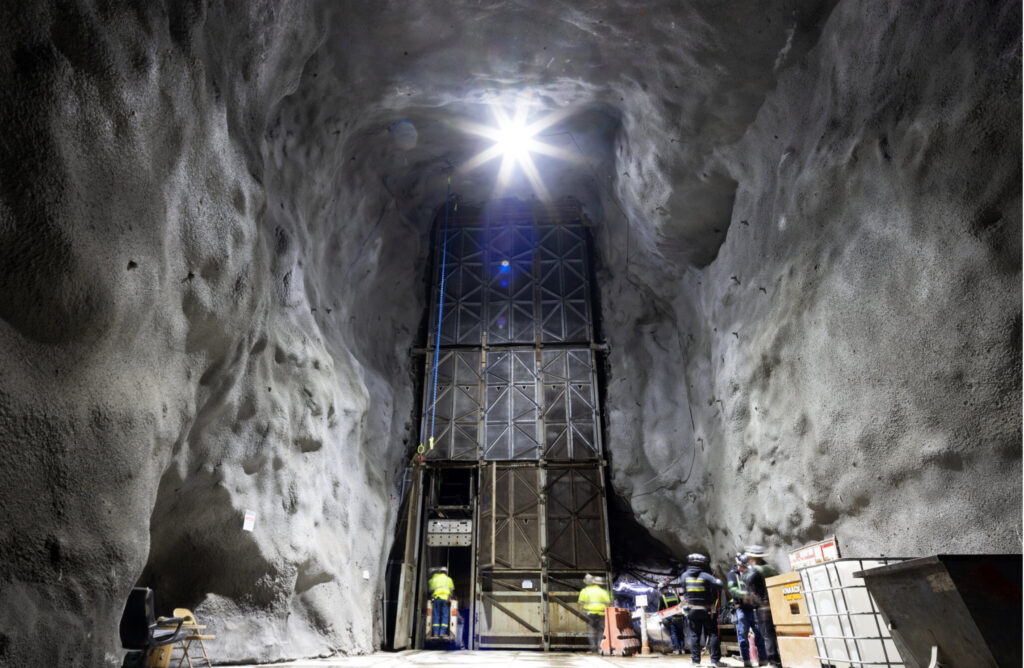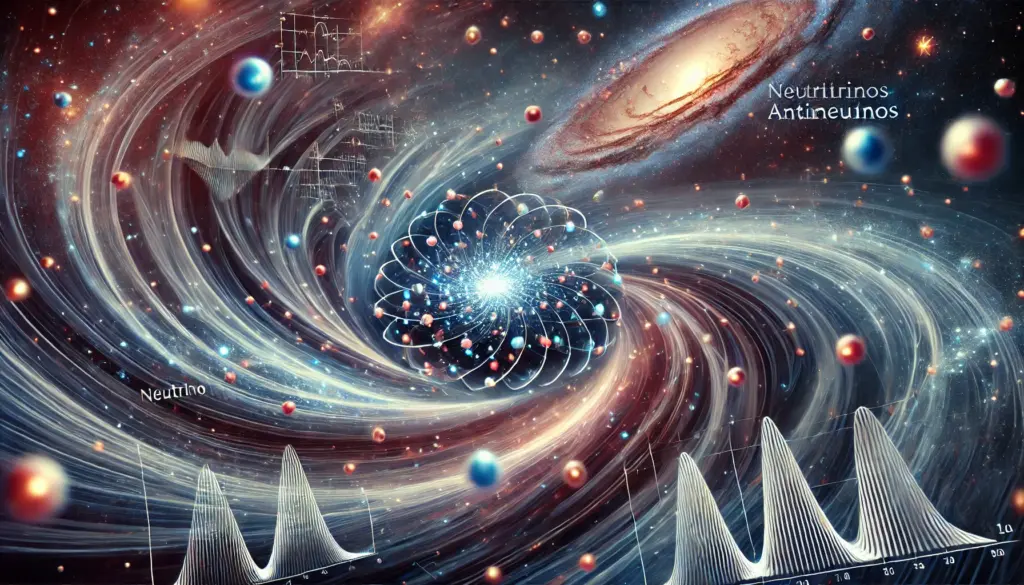ChatGPT:
Mining for Neutrinos, and for Cosmic Answers
Introduction 🌌
The Sanford Underground Research Facility (SURF) in South Dakota is home to one of the most ambitious particle physics experiments ever undertaken. The Deep Underground Neutrino Experiment (DUNE) seeks to capture and study neutrinos, elusive particles that may hold the key to some of the universe’s most profound mysteries. This multi-billion-dollar project, spanning a distance of 800 miles from a particle accelerator at Fermilab in Illinois to the caverns of SURF, represents a grand scientific effort to understand how matter came to dominate the universe following the Big Bang.
The Sanford Underground Research Facility 🏞️
SURF, located in the Black Hills of South Dakota, is an underground lab situated a mile below the earth’s surface. Once a thriving gold mine, it is now repurposed to host high-level physics experiments. Two vast caverns have been excavated, each the size of a seven-story building, where DUNE will be conducted.
Historically, miners toiled here in search of precious metals, but the modern occupants are scientists and engineers aiming to explore subatomic particles rather than minerals. SURF will play a critical role in detecting neutrinos, particles so elusive that they pass through ordinary matter with ease, making them incredibly hard to study.
The Deep Underground Neutrino Experiment 🎯
DUNE is poised to become the largest subterranean scientific project in U.S. history. The experiment involves shooting a beam of neutrinos from the Fermi National Accelerator Laboratory (Fermilab) near Chicago through the earth’s crust to the detectors housed at SURF. These neutrinos, produced in massive numbers, will travel underground across multiple states without the need for tunnels. The objective is to capture and analyze these neutrinos once they reach the South Dakota facility.
Scientists hope DUNE will provide crucial insights into why the universe consists of matter rather than antimatter, a discrepancy that puzzles physicists. The experiment’s success could revolutionize our understanding of the cosmos by answering fundamental questions about the nature of the universe and the forces that shaped its formation.
What are Neutrinos? 🧩
Neutrinos are among the most abundant particles in the universe, yet they remain one of the least understood. These subatomic particles have almost no mass and interact so weakly with other matter that trillions pass through every human being each second without leaving a trace. Despite their prevalence, detecting and studying neutrinos is extraordinarily difficult.
First hypothesized by physicist Wolfgang Pauli in 1930 to explain strange behaviors observed during nuclear reactions, neutrinos remained theoretical until scientists finally confirmed their existence decades later. Since then, research has revealed their unique properties, including their ability to oscillate, or “shape-shift,” between different forms as they travel through space.
Neutrinos and the Matter-Antimatter Mystery 🧪
One of the most profound questions in physics is why matter exists at all. According to established scientific theories, the Big Bang should have created equal amounts of matter and antimatter, which would have annihilated each other. This would have left behind a universe composed of energy but devoid of any physical matter—no stars, planets, or life.
However, the universe as we know it is clearly made of matter, indicating that something must have tipped the scales in favor of matter over antimatter. Many physicists believe that neutrinos may hold the answer. If neutrinos and their antimatter counterparts (antineutrinos) behave differently, it could explain why matter came to dominate the universe.
DUNE aims to explore this possibility by studying whether neutrinos oscillate, or change form, at a different rate than antineutrinos. If they do, it could offer the long-sought explanation for the imbalance between matter and antimatter, potentially solving one of the greatest mysteries in cosmology.
The Technology Behind DUNE 💡
The core of the DUNE experiment involves massive detectors filled with 17,000 metric tons of liquid argon, a material chosen for its ability to interact with neutrinos. When a neutrino collides with an argon atom, it creates a tiny flash of light and a small electrical signal. These events are rare but incredibly valuable for scientists, as each one offers clues about the neutrino’s behavior.
To increase the chances of capturing enough neutrino interactions for analysis, DUNE will eventually use four such detectors. The construction process is a monumental task, likened to “building a ship inside a glass bottle.”

FAQs
1. What is the Deep Underground Neutrino Experiment (DUNE)?
DUNE is a large-scale international experiment designed to study neutrinos, mysterious subatomic particles that may hold answers to some of the universe’s biggest questions. The project aims to detect neutrino oscillations and study their properties to explain why the universe consists mostly of matter rather than antimatter.
2. Where is DUNE located?
The detectors for DUNE are located a mile underground at the Sanford Underground Research Facility (SURF) in the Black Hills of South Dakota. The neutrinos are created at Fermilab, near Chicago, and travel 800 miles through the Earth to reach the detectors.
3. Why are neutrinos important to study?
Neutrinos are the most abundant particles in the universe, yet they are incredibly difficult to detect because they rarely interact with other matter. Studying them could help explain why there is more matter than antimatter in the universe, a mystery left unresolved by the Big Bang theory.
4. How will DUNE capture neutrinos?
DUNE will use large tanks filled with liquid argon to capture neutrinos. When a neutrino collides with an argon atom, it creates a flash of light and an electrical signal, which scientists can analyze to learn more about the neutrino’s properties.
5. What is the purpose of shooting neutrinos underground?
By sending a beam of neutrinos from Fermilab in Illinois to SURF in South Dakota, scientists can study how neutrinos change form during their journey. This process, known as neutrino oscillation, could provide clues about fundamental properties of the universe.
6. Why does DUNE need to be underground?
The detectors are placed deep underground to shield them from cosmic rays and other sources of interference that could obscure the rare interactions between neutrinos and argon atoms. The isolation helps ensure more accurate results.
7. How much does the DUNE project cost?
The cost of the DUNE project is projected to reach around $5 billion. This includes the construction of underground caverns, the installation of large-scale detectors, and upgrades to the Fermilab accelerator that produces the neutrino beam.
8. When will DUNE be operational?
The project has faced delays, and the first phase is now expected to be completed by 2040. Originally scheduled for 2035, the project timeline has been extended due to construction and safety challenges.
9. What challenges has DUNE faced?
DUNE has encountered multiple delays due to safety concerns, cost overruns, and construction difficulties. In 2023, an accident involving an ironworker further delayed progress, prompting safety reviews and halting work temporarily.
10. How does DUNE compare to Japan’s Hyper-K experiment?
Japan’s Hyper-K experiment is also focused on studying neutrinos and is expected to begin operations by 2027. While Hyper-K is simpler and more likely to produce results sooner, DUNE is a more ambitious project that aims to not only study neutrino oscillations but also search for dark matter and supernova neutrinos.

